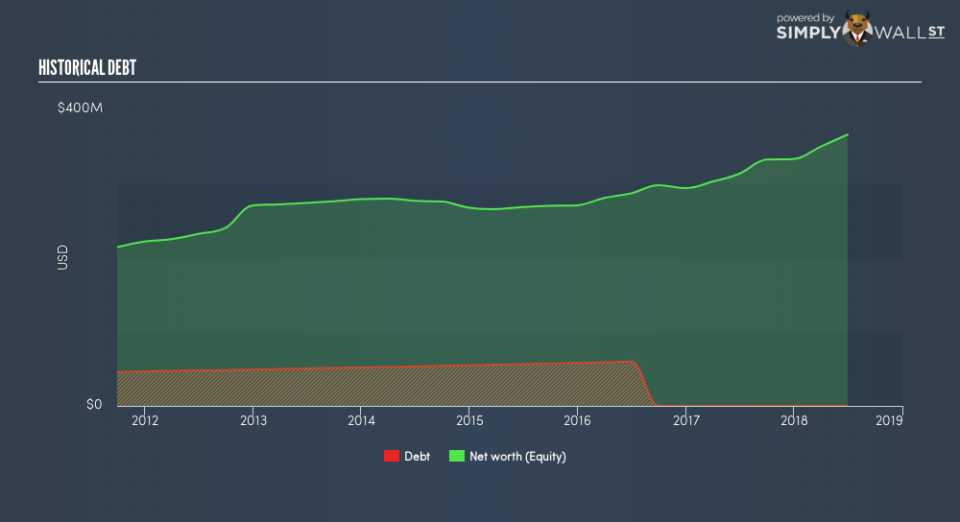Is Rudolph Technologies Inc (NYSE:RTEC) A Financially Sound Company?

The direct benefit for Rudolph Technologies Inc (NYSE:RTEC), which sports a zero-debt capital structure, to include debt in its capital structure is the reduced cost of capital. However, the trade-off is RTEC will have to adhere to stricter debt covenants and have less financial flexibility. Zero-debt can alleviate some risk associated with the company meeting debt obligations, but this doesn’t automatically mean RTEC has outstanding financial strength. I will go over a basic overview of the stock’s financial health, which I believe provides a ballpark estimate of their financial health status.
See our latest analysis for Rudolph Technologies
Is financial flexibility worth the lower cost of capital?
Debt capital generally has lower cost of capital compared to equity funding. Though, the trade-offs are that lenders require stricter capital management requirements, in addition to having a higher claim on company assets relative to shareholders. Either RTEC does not have access to cheap capital, or it may believe this trade-off is not worth it. This makes sense only if the company has a competitive edge and is growing fast off its equity capital. RTEC’s revenue growth in the teens of 13.8% is not considered as high-growth, especially for a small-cap company. More capital can help the business grow faster. If RTEC is not expecting exceptional future growth, then the decision to avoid may cost shareholders in the long term.
Can RTEC pay its short-term liabilities?
Since Rudolph Technologies doesn’t have any debt on its balance sheet, it doesn’t have any solvency issues, which is a term used to describe the company’s ability to meet its long-term obligations. But another important aspect of financial health is liquidity: the company’s ability to meet short-term obligations, including payments to suppliers and employees. Looking at RTEC’s most recent US$46.7m liabilities, the company has been able to meet these obligations given the level of current assets of US$360.1m, with a current ratio of 7.71x. Though, anything above 3x is considered high and could mean that RTEC has too much idle capital in low-earning investments.
Next Steps:
As a high-growth company, it may be beneficial for RTEC to have some financial flexibility, hence zero-debt. Since there is also no concerns around RTEC’s liquidity needs, this may be its optimal capital structure for the time being. Going forward, RTEC’s financial situation may change. I admit this is a fairly basic analysis for RTEC’s financial health. Other important fundamentals need to be considered alongside. You should continue to research Rudolph Technologies to get a better picture of the stock by looking at:
Future Outlook: What are well-informed industry analysts predicting for RTEC’s future growth? Take a look at our free research report of analyst consensus for RTEC’s outlook.
Valuation: What is RTEC worth today? Is the stock undervalued, even when its growth outlook is factored into its intrinsic value? The intrinsic value infographic in our free research report helps visualize whether RTEC is currently mispriced by the market.
Other High-Performing Stocks: Are there other stocks that provide better prospects with proven track records? Explore our free list of these great stocks here.
To help readers see past the short term volatility of the financial market, we aim to bring you a long-term focused research analysis purely driven by fundamental data. Note that our analysis does not factor in the latest price-sensitive company announcements.
The author is an independent contributor and at the time of publication had no position in the stocks mentioned. For errors that warrant correction please contact the editor at editorial-team@simplywallst.com.

